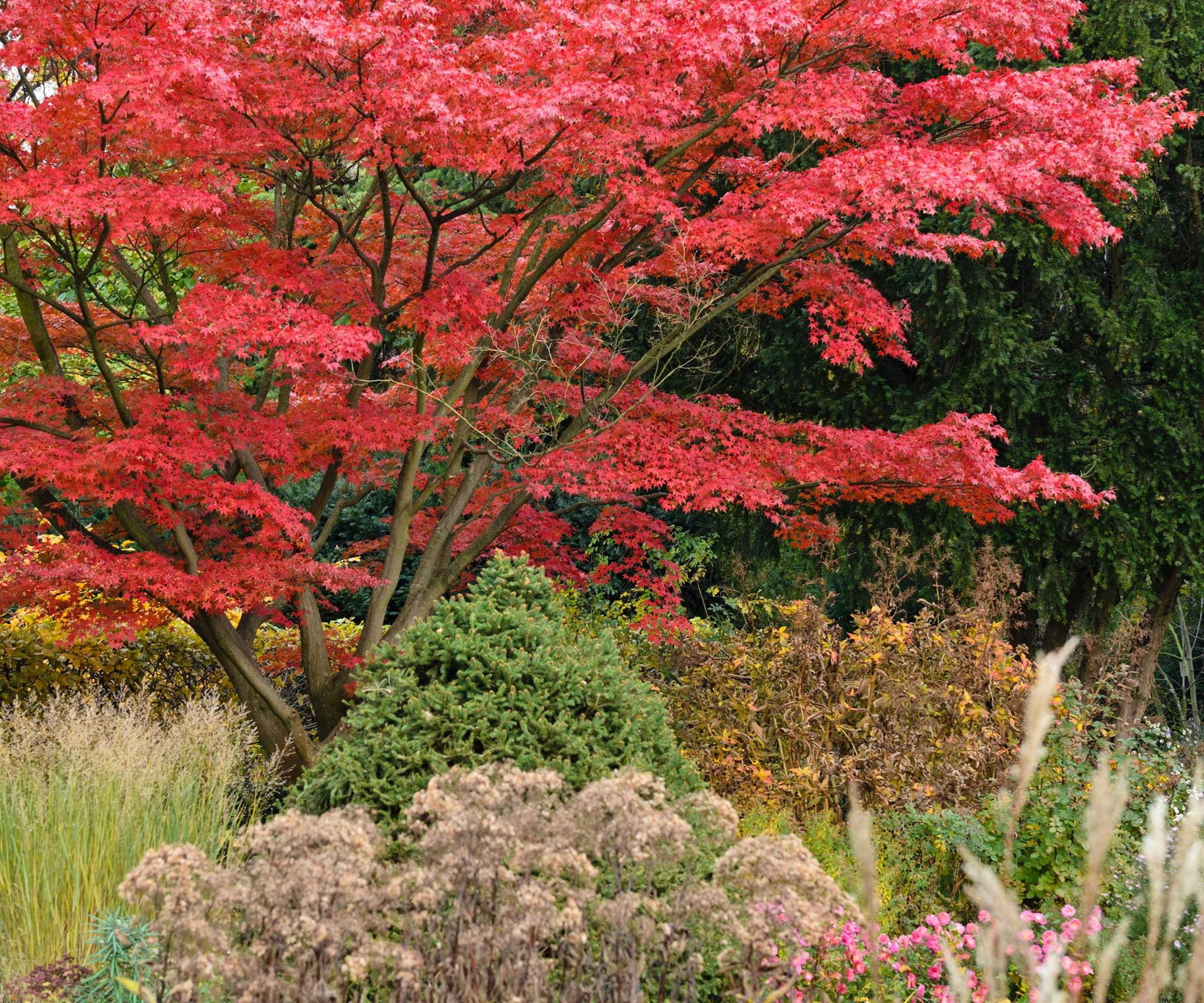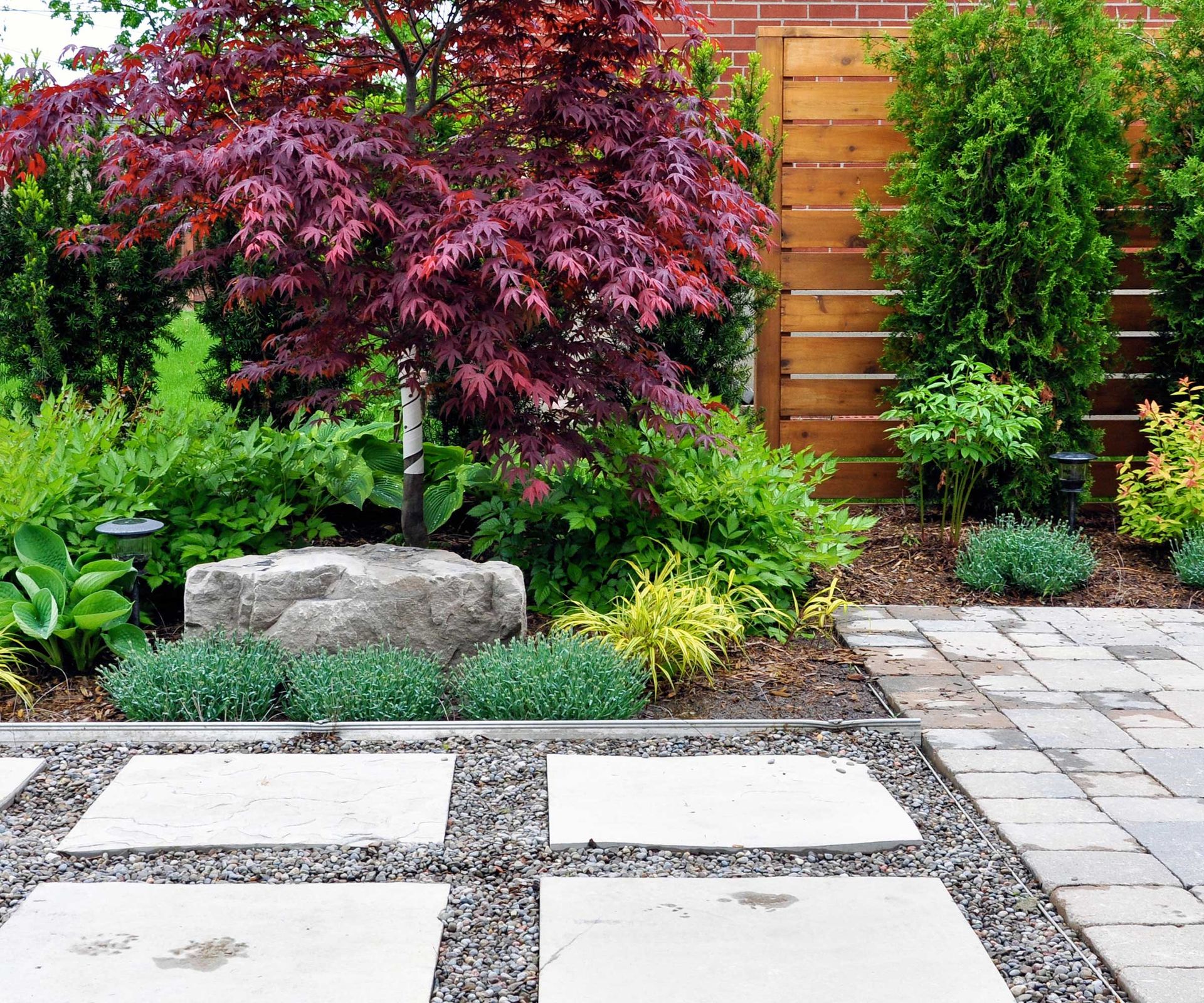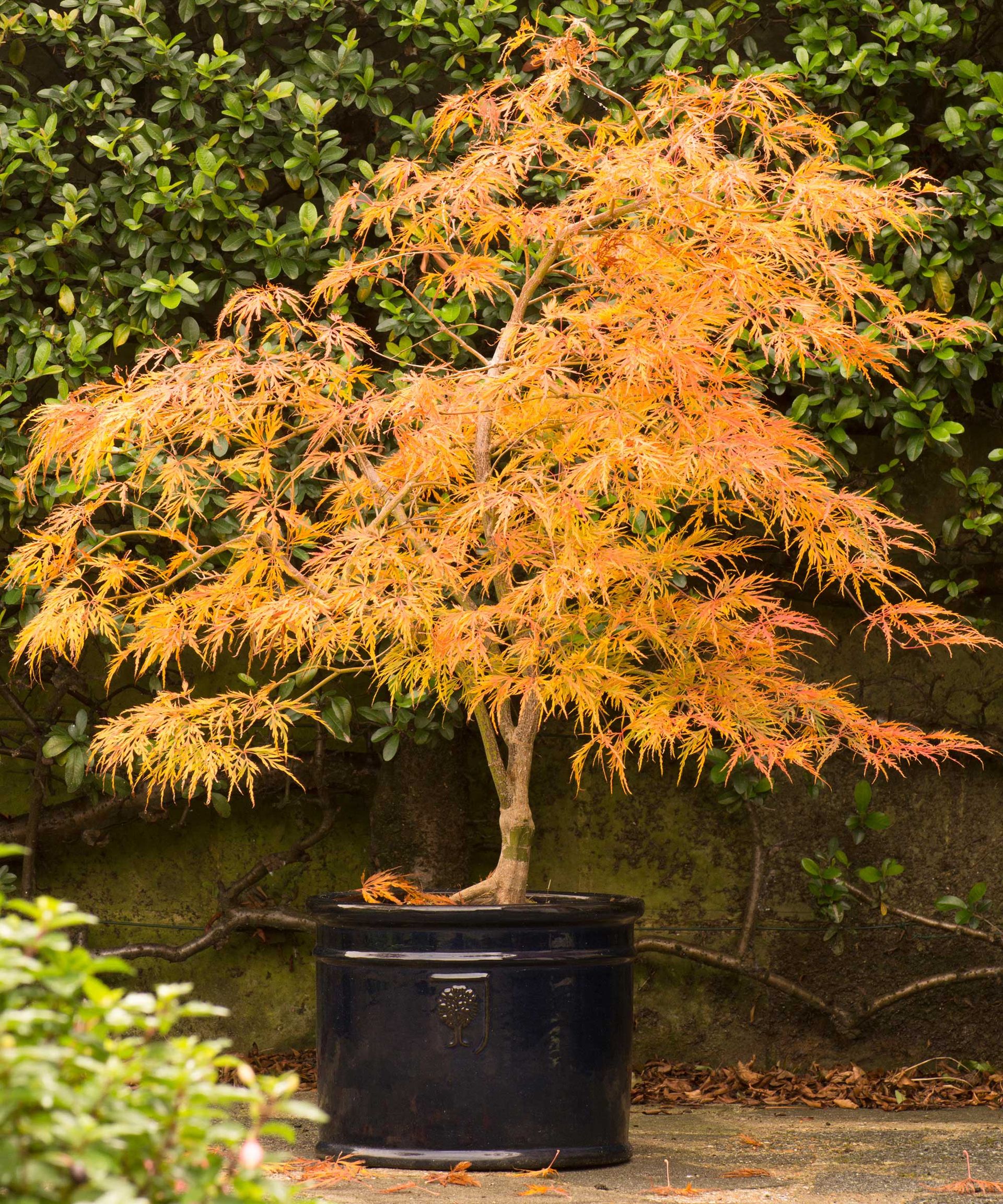Japanese maples care and growing guide – top tips for these colorful trees
Acers create a spectacular feature in any outdoor space – here's how to look after them successfully
- (opens in new tab)
- (opens in new tab)
- (opens in new tab)
- Sign up to our newsletter Newsletter


With their gloriously colored foliage and graceful shapes, Japanese maple trees – otherwise known as acers – always make an impact. There are many varieties and sizes to choose from, with trees available to suit most situations.
With shades ranging from bright yellow through to deepest red, acers are truly the best trees for fall color. 'However, their vibrant foliage colors make them a favorite of many due to the interest they add to the garden year-round, not just in the fall,' says Tammy Sons, Owner of Tennesee Wholesale Nursery (opens in new tab).
‘Japanese maple trees are the epitome of beauty, gracing upscale landscapes of fine gardens throughout the United States and Europe,’ adds Tammy. 'They are highly sought-after trees, and are generally low maintenance.'
- Shop Japanese maple trees at Nature Hills (opens in new tab)
- Shop Japanese maple trees at Fast Growing Trees (opens in new tab)

Acer palmatum 'Autumn Glory'
Where to plant Japanese maples
Check your hardiness zone, and make sure your chosen acer is suitable for your location. Most Japanese maple trees are suitable for zones 5-8, but some hardier varieties can be planted outside these boundaries.
Consider the size, too. Japanese maple trees can grow to varying heights, though most will reach somewhere between 5-25ft. However, there are varieties that will grow as small as 2ft and as big as 35ft, so check the mature size of the tree before deciding where to put it. Dwarf varieties of Japanese maples make ideal trees for small gardens.
Your soil type will also play a factor, as Japanese maple trees prefer rich, moist, slightly acidic, well-drained soil. They can struggle in very alkaline soil, and dislike being overly wet or dry. However, if you don’t have the right conditions, the good news is that Japanese maples are some of the best trees to grow in pots, which allows you to control the soil type.
They grow well in sun or partial shade. 'They need shelter from cold winds and from late frosts as their unfurling spring foliage is easily damaged, but thoughtful sighting can protect them from harm,' says Graham Rice, an expert from Amateur Gardening.

Graham has a wealth of knowledge in all things horticulture – acers included. He trained at the prestigious Royal Botanic Gardens in Kew, UK, and since then has written more than 20 books on plants and gardening, as well as writing for many gardening magazines and websites. He gardened in Pennsylvania for 20 years, but has recently returned to England.

Acer palmatum 'Orange Dream'
How to plant Japanese maples
Plant these trees in the same way as other deciduous trees and shrubs, says Graham. 'Maples need no special planting techniques.'
Support for newly planted maple trees is important, he continues. 'The root system needs to be prevented from moving so that the fragile new roots can take hold in the surrounding soil.
'Research has shown that a short stake is more effective than a tall one. For most trees, 4ft stakes are ideal. To prevent damage to the existing root system, the stake can be driven in at an angle and the tree secured to it with a tree tie.
'Weed growth can be prevented by removing the roots of perennial weeds while preparing for planting,' he adds.

Acers bring a pop of color to a planting scheme
How to grow Japanese maple trees in pots
Varieties of Japanese maples are superb for container gardening and make impressive specimens.
Use fresh potting soil that's well draining – ideally one recommended for rhododendrons and other lime-hating plants.
Remember that plants in containers will take less frost than the same plant growing in the ground, notes Graham, so some protection may be necessary when temperatures drop. In the summer months, pot-grown Japanese maples will need frequent irrigation as they mature.
'Think carefully about exactly where your Japanese maple in its container will be sited as it will be difficult to move as it matures,' Graham adds.

Acer palmatum var. dissectum 'Viridis'
Japanese maple trees care
Japanese maples are generally easy-care trees, but there are a few things you can do to keep them looking their best.
'Mulch immediately after planting with bark chips or other weed-free mulch to prevent weed growth and help retain moisture,' says Graham. Then, continue to do this every other year. Avoid piling it up immediately around the trunk, which can cause it to rot.
'Newly planted maples may need irrigation in their first year or two to prevent drying out in the summer months, and in some seasons watering every week may be necessary,' he continues. 'Newly planted maples are at their most vulnerable in the stage between planting and their new roots becoming established.
'If the site was prepared well, fertilizing will not usually be necessary in the first year, in fact, over-feeding can be a risk. From the second year, feed with a rhododendron feed [available on Amazon (opens in new tab)] if growth is slow.'
If growing Japanese maple trees in pots, feed them every spring with slow-release fertilizer, and keep the soil moist but not overly wet. In very cold winters, the trees will benefit from the pots being wrapped with bubble wrap. This will provide insulation to prevent the roots from freezing.
Pruning Japanese maples isn't essential as they have a beautiful, natural shape – but if yours becomes overgrown, it's best to trim it in winter.

Acer palmatum 'Sango-kaku'
Solving problems with Japanese maples
'Maples can be troubled by a number of pests and diseases but they rarely pose serious problems,' says Graham. 'Young trees, in particular, may be attacked by aphids and it pays to deal with them promptly using an organic insecticide as a bad infestation can limit the growth of newly planted specimens. The soft new spring growth is the most vulnerable.
'Fungus diseases may attack the roots but this is most likely to happen when poor drainage leads to soil that stays too wet for too long. Thorough preparation is the best precaution – dig over the area to be planted to open the soil and allow good drainage.'
Do Japanese maple trees lose their leaves?
Japanese maple trees lose their leaves as they are deciduous trees. This happens between fall and winter.
Don’t worry when this happens, as the tree will recover and develop new growth in the spring.
Do Japanese maple trees grow fast?
Japanese maple trees are slow to moderate growers, growing around 1-2ft per year. Some varieties will reach their mature height in a decade, while others can take several decades.

As editor of Period Living, Britain's best-selling period homes magazine, Melanie loves the charm of older properties. I live in a rural village just outside the Cotswolds in England, so am lucky to be surrounded by beautiful homes and countryside, where I enjoy exploring. Having worked in the industry for almost two decades, Melanie is interested in all aspects of homes and gardens. Her previous roles include working on Real Homes and Homebuilding & Renovating, and she has also contributed to Gardening Etc. She has an English degree and has also studied interior design. Melanie frequently writes for Homes & Gardens about property restoration and gardening.
-
-
 Robert Pattinson just bought a Spanish Colonial-style home – with an interior designer past
Robert Pattinson just bought a Spanish Colonial-style home – with an interior designer past'The Batman's' Robert Pattinson and Suki Waterhouse purchased the Jeff Lewis-designed Hollywood Hills estate for $5.3 million
By Megan Slack • Published
-
 7 expert-approved methods to remove candle wax from carpet
7 expert-approved methods to remove candle wax from carpetCleaning professionals share their tips on how to remove candle wax from carpet
By Millie Hurst • Published

